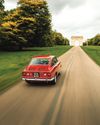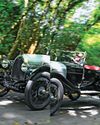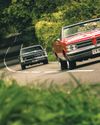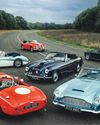In Europe, the post-war pick-up truck or delivery van tended to be a bit too much like a converted passenger car or a scaled-down heavy-duty vehicle.
In neither case was it something you would drive out of choice, rather from practical necessity. In Britain, only the arrival of the Ford Transit in 1965 adequately addressed this situation.
Detroit had its 'Transit moment' almost two decades earlier. Post-1945, the Americans, heeding the newfangled science of market research, saw the need for something that was designed for rugged commercial requirements, but also had enough roadgoing refinements performance and comfort among them - that it could be used for 'civilian' activities as an alternative to a station wagon.
Launched in November 1947 (as a'48 model), Ford's 'Bonus Built' F-Series got the balance just right from the start. As the first standalone Ford truck design not derived from an existing passenger car, it carried over the well-proven six- and eight-cylinder flathead engines, but was based on a new chassis with a third crossmember, double-acting shock absorbers and the cab body isolated from the frame on rubber mountings. It still used cart springs at both ends, but, given that the contemporary Ford sedans and station wagons still eschewed independent front suspension, this was not seen as any great disadvantage.
With its bull-nosed, cartoon-like styling and rugged stance, it is really the great-grandaddy of the various F-Series trucks that continue to top the best-sellers list in North America.
The F-Series was launched into a post-war North American market where commercial vehicle sales were regarded as having equal importance to passenger cars. After all, Ford had sold 17 million of them since the era of the Model T, so the business was highly valued.
Henry Ford's earliest days in the automotive business were focused on trucks rather than cars, perhaps reflecting his origins in farming.
This story is from the August 2024 edition of Classic & Sports Car.
Start your 7-day Magzter GOLD free trial to access thousands of curated premium stories, and 9,000+ magazines and newspapers.
Already a subscriber ? Sign In
This story is from the August 2024 edition of Classic & Sports Car.
Start your 7-day Magzter GOLD free trial to access thousands of curated premium stories, and 9,000+ magazines and newspapers.
Already a subscriber? Sign In

RAY HILLIER
Double-chevron oddity proves a break from the norm for this Crewe specialist

SHORT BACK & GLIDES
Eccentric enthusiast Captain RG McLeod's series of Manx-tailed Bentley Specials reached its zenith with this unique S2 Continental.

People's choice
The diminutive but multi-million-selling Fiat 850 packed a remarkable diversity of form and function into its compact footprint

PLASTIC BREAKS FROM THE NORM
Glassfibre revolutionised niche car-body production, but just occasionally strayed into the mainstream.

A SENSIBLE SUPERCAR
The cleverly conceived four-seater Elite secured Lotus a place at the big players' table, but has it been unfairly maligned since then?

"I had a habit of grabbing second place from the jaws of victory"
From dreams of yachting glory to the Le Mans podium, via a stint at the top of the motorsport tree, Howden Ganley had quite the career

Still going strong
Herbert Engineering staked its reputation on the five-year warranty that came with its cars. A century on, this Two Litre hasn't made a claim

One for the kids
General Motors was aiming squarely at the youth market with the launch of the Pontiac GTO 60 years ago, and its runaway success popularised the muscle-car movement

A NEW BREED OF HERO
Launched at the turn of the millennium, the GT3 badge has already earned a place alongside RS, CS and turbo in Porsche lore.

Brits with SIX appeal
The straight-six engine is synonymous with a decades-long legacy of great British sports cars. Six variations on the sextet theme convene for comparison